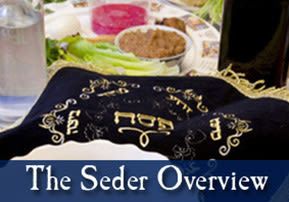
The Seder Overview
"In every generation, each person must feel as if he personally had come out of Mitzrayim (Egypt), as the Torah says: "You should tell your child on that day...

“In every generation, each person must feel as if he personally had come out of Mitzrayim (Egypt), as the Torah says: “You should tell your child on that day, ‘When I left Mitzrayim, Hashem did miracles for me …..'” [The Pesach Haggadah]
THE SEDER PLATE
It is customary to use our most beautiful silver, dishes and tableware. At the head of the table, in front of the person leading the Seder is the Seder plate and a matza bag that holds the three matzot. Others use a Seder plate that looks like a three-tiered structure that holds three matzot with a place for 6 items on its roof.
The 6 items have special meanings.
1. Z’ro’a – A Roasted Bone (roasted chicken wing or shank bone) to remind us of the Pesach offerings that would be brought in the Bait Hamikdash (Holy Temple) in Yerushalayim (Jerusalem).
2. Beitzah – A Roasted Hardboiled Egg to remind us of our mourning at the destruction of the Bait Hamikdash, may it be rebuilt soon, in our lifetime.
3. Maror
4. Chazeret
Two types of bitter herbs (vegetables). We eat bitter herbs twice during the Seder.
1. once by themselves as MAROR
2. the second time with matzah as KORECH
Two kinds of bitter vegetables are placed on the Seder plate. Most people use romaine lettuce (whole leaves or the stalks) and raw horseradish (whole or grated). Either may be used for MAROR or KORECH.
5. Charoset – a mixture of ground apples, nuts, ginger, cinnamon, and red sweet wine. The look and feel of mortar symbolizes the bricks and mortar which we were forced to use when we were slaves in Egypt.
6. Karpas – A vegetable, other than marror, (most use boiled potato, celery or parsley), which is dipped into salt water and eaten.
To remind ourselves of the sweat and tears we shed as slaves, we place a bowl of the salt water near the Seder plate.
MATZAH
We take three whole Matzot and place them one above the other, either in a napkin/matza cover or in a special compartment under the Seder plate. One of the reasons for the number three is the three sections of Jewry – Kohain, Levi, and Yisroel.
We eat Matzah at least three times during the Seder,
1. By itself as MATZAH
2. With MARROR as KORECH
3. By itself as TZAFUN (the Afikoman).
These three portions must be MATZAH SH’MURAH, a special matzah made from wheat that was designated for the mitzvah of matzah and was guarded against moisture from the moment it was cut from the field.
During the rest of the meal, (and Pesach for that matter), any matzah especially prepared for Pesach may be eaten.
ARBA KOSOT: THE FOUR CUPS OF WINE
At the Seder, at the end of KADDESH, MAGGID, BARECH, and HALLEL sections of the Haggadah, each person is obligated to drink a cup of wine.
Though wine is preferable, If someone wishes they may use red grape juice instead of red wine. Either way, red is preferred.
There are many reasons given for the drinking of four cups of wine on the Seder night, one of which is;
Four different terms of deliverance are cited in the book of Shemot (Exodus) (6:6-7).
“…and I will bring you out from under the burden of the Egyptians, and I will deliver you from your bondage, and I will redeem you with a stretched out arm, and with great judgments. And I will take you to me for a people…”
Vehotzeti, Vehitzalti, Vega’alti, Velakachti.
RECLINING
We are required to lean to our left side, during the drinking of the wine and eating of the matza, as a symbol of freedom. Like the olden days, when rich people used to lounge on pillows and special couches.
We are supposed to act in a way that shows majesty and freedom – therefore, each person’s cup is filled by someone else.
As they represent slavery, we do not lean when we eat the maror (bitter herbs).
THE SEDER (ORDER) OF THE SEDER
Kaddesh – Recite the Kiddush.
Urechatz – Wash the hands before eating Karpas.
Karpas – Eat a vegetable dipped in salt water.
Yachatz – Break the middle matzah and hide half for Afikoman.
Maggid – Tell the Pesach story.
Rachtzah – Wash the hands before eating matzah.
Motzi Matzah – Say Hamotzi and the special bracha for the matzah and then eat the matzah.
Maror – Eat the bitter herbs.
Korech – Eat a sandwich of matzah and marror.
Shulchan Orech – Serve and eat a festive meal.
Tzafun – Eat the Afikoman.
Barech – Recite Birchat Hamazon (Grace after Meals).
KADDESH: (Sanctification)
We recite the Kiddush over wine and drink the first cup of wine while seated and reclining on the left side.
We also recite the Shehechiyanu bracha (blessing) thanking Hashem for bringing us to this day.
URECHATZ: (Washing)
We wash our hands, by pouring water from a cup, twice on each hand, beginning with the right, as if washing for matzah, however we do NOT make a bracha, in preparation for eating the Karpas.
Urechatz falls into the category of some of the strange things we do at the Seder in order to perk up the curiosity of the youngsters.
KARPAS
We take a small piece of karpas, (potato or other vegetable other than marror), and dip in salt water.
We then make the bracha “borei-pri-ha’adama,” (keeping in mind that the bracha also apply to the marror, to be eaten later), and eat the vegetable. Dipping into salt water reminds us of the salty tears and sweat we shed during our long bondage in Egypt. Like Urechatz, this strange doing will also prompt plenty of questions from the younger crowd.
YACHATZ: (Split the Matzah)
We break the middle matzah in two, wrapping the larger portion and putting it aside for later use as the Afikoman.
This is what the children are waiting for…. They try to “steal” the Afikoman, and later negotiate for its return.
MAGGID: (The Retelling)
A retelling of the story of the how God saved us from slavery in Egypt and the first Pesach / Passover.
The head of the household explains the story so that everyone can understand it.
This is the main part of the Seder: The discussion of the departure from Egypt and the meaning of Chairut (freedom). Though there is a formalized text, feel free (no pun intended) to ask any question you like.
HA LACHMA ANYA (The Bread of Affliction)
The first paragraph of Maggid describes the Matzah, with an invitation to all who are hungry to come and share our food. It is a custom that many families have at their Seder at least one guest who has nowhere else to go.
We pour the second cup of wine before reciting the Ma Nishtana, the four questions.
MA NISHTANA (The Four Questions)
For a print version of the Ma Nishtana click here
The youngest person at the Seder table asks the 4 questions.
-
Why is this night different from all other nights?
-
On all other nights we eat all kinds of chametz or matzah, why do we eat only matzoh tonight?
-
On all other nights we eat any kinds of vegetables, why do we eat marror (bitter herbs), tonight?
-
On all other nights we don’t usually dip one food into another, why tonight – twice? We dip the karpas vegetable in salt water and the maror in Charoset?
-
On all other nights we eat either sitting or leaning, why do we lean on a pillow tonight?
THE ANSWER IS……
WE WERE SLAVES TO PHAROH IN EGYPT……
“Had God not taken us out from Egypt, all of us would still be slaves to Pharaoh.”
MA’ASE B’REBBI ELIEZER: THE STORY OF THE FIVE RABBIS
Rabbi Eliezer, Rabbi Yehoshua, Rabbi Elazar ben Azarya, Rabbi Akiva and Rabbi Tarfon were all sitting in Bnei Brak, retelling the story about the miracles of the redemption from slavery when one of their students came up and said, “It is morning and time to recite the Shema” (the prayer, “Hear O Israel the Lord our God the Lord is One”).
All these men, sages who clearly knew the Redemption story inside and out, yet they spent the whole night talking about it. Not only that – they got so involved in the discussion that they didn’t notice that it was already morning.
OMAR RABBE ELAZAR
Rabbi Elazar Ben Azariah was a renown leader and scholar, who was elected Nassi (leader) of the Jewish people at the age of eighteen. The Sages feared that as such a young man, he would not be respected. Overnight, his hair turned grey and his beard grew so he looked as if he was 70 years old.
THE FOUR SONS
The four sons in the Haggadah represent the four main types of people, a wise man, a wicked man, a simple man, and a man who does not know how to ask.
The wise man relates to the laws of Pesach in order to learn them; the wicked man dissociates himself from Bnei Yisroel (the community of Israel) and disdains the laws of Pesach; the simpleton wishes to know generally what is special about Pesach; and it is our duty to explain and interpret to he who does not know how to ask.
THE TEN PLAGUES
Why do we take out a little wine with our little finger as we repeat the Ten Plagues? The reason is that we don’t want our cups to be full when we tell about other people’s pain. It is wrong to rejoice when other people die – even bad people.
We have to remember that we are all God’s creations. Therefore we take off a little wine, a little of our happiness, for it could never be complete if it is at the expense of another.
PESACH, MATZAH, MARROR
As we approach the last part of Maggid, we reach the most important part of the reading of the Haggadah: Pointing out and explaining the three symbols of the night – PESACH, MATZAH and MARROR. We are told that if someone doesn’t actively explain and mention the three above items, they have not fulfilled their obligation of the Seder night.
Pesach – Why did our ancestors eat an offering called Pesach when the Bait Hamikdash still stood? Because Pesach means, literally “to pass over.” In Egypt, Hashem passed over the homes of the Jews when He killed the Egyptian firstborn.
Matzah – Why do we eat this Matzah? (pointing to the matzah) Because it reminds us that when the Jews left the slavery of Egypt they had no time to bake their bread. They took the raw dough on their journey and baked it in the hot desert sun into matzah.
Last and not least, Why do we eat Marror? Because Marror reminds us of the bitter and cruel way the Egyptians treated the Jewish people when they were slaves in Egypt.
The end of the recitation is followed by a bracha over the second cup of wine, drinking the second cup of wine while seated and reclining on the left side.
RACHTZAH: (Washing the Hands)
Before beginning the meal we wash our hands, by pouring water from a cup, twice on each hand, beginning with the right, and we DO make a bracha in preparation for eating the matzah. This is the standard procedure before eating Matzah at any meal.
MOTZI MATZAH – (Make a bracha on and eat the matzah)
The head of the house raises all three matzot, making two brachot. The upper two matzot are then broken up and distributed.
To fulfill the Mitzvah of eating matzah on the Seder night, one should eat a kezayit (an amount whose volume equals that of an olive, approximately the volume equivalent of half an egg) from EACH of the top TWO matzot. That means we have to eat a LOT of matzah (you can do this by adding more to the original pieces that are distributed from the Hamotzi). Also – don’t forget to eat it while reclining to the left and quickly. (WITHIN TWO TO NINE MINUTES).
MARROR: (Bitter Herbs)
Each person is given a half egg’s volume of Marror dipped into the Charoset, a mixture of apples, nuts, cinnamon and wine, which symbolizes the mortar used by the Jews during their slavery. Shake off the charoset. Recite the bracha: “….on eating marror” and eat the maror.
When eating the Marror, which reminds us of the hard labor and bitter slavery, we do NOT recline.
KORECH: (Sandwich)
We make a sandwich – using the bottom Matzah eaten in combination with Marror and Charoset.
Rabbi Hillel used to eat the marror together with matzah in a sandwich. In his honor, we eat some maror on a piece of matzah, with some charoset.
This time we eat while reclining to the left.
SHULCHAN ORECH: The Meal
Now a festive meal is eaten. There are no particular requirements regarding what to eat at this meal, except to remember to leave a bit of room and appetite for the Afikoman which is eaten at the end of the meal.
Some families eat the hardboiled egg swimming in salt water as a first appetizer of this meal.
It is also customary NOT to eat dry-roasted meat during the Seder meal so as not to imply that we are bringing and eating a “replacement” pesach offering in these days that the Bait Hamikdash is not standing.
TZAFUN: Eating the Afikoman
“Tzafun” means “hidden”. At this point it is time to eat the matzah which was “put away” for “dessert.” The idea was to keep the children awake and attentive throughout the pre-meal proceedings, waiting for this part. Here they all “wake up” and “children” bargain for the return of the Afikoman and parents and/or guests have to ransom it back.
The Afikoman itself reminds us of the Pesach Lamb which was the last food eaten at the Seder.
It must be eaten before Cha’tzot (6 relative hours after nightfall) around midnight, because that is the deadline for eating the Pesach offering.
We need to get down ANOTHER kezayit (olive’s volume) of matzah. Again, the Pesach Lamb was eaten on a FULL stomach, so too we eat the Afikoman, while leaning on the left side. After eating the Afikoman, we must not eat or drink anything except the last two Seder wine cups (or water).
BARECH: Birchat Hamazon (Grace after Meals)
The third cup of wine is poured, and Birchat Hamazon (Grace after Meals) is recited. As after any meal, the Birchat Hamazon is recited, thanking Hashem for all we have received. We add the special Pesach paragraph (Ya’aleh V’ya’vo).
At the end, a bracha is said over the third cup and it is drunk (literally) while reclining to the left side. (or is it falling over)?
The fourth cup is poured.
A fifth cup of wine is poured and placed on the Seder table. This is the Cup of Elijah, an offering for the Prophet Elijah. who will herald the Mosiach (Messiah), and is supposed to come on Pesach to do this.
At this point, the door to the home is opened for a while to invite the prophet Elijah in.
After the wine is poured, the door is opened. It is to express our faith in Hashem that on this night of “Layl Shimurim” nothing will happen to us; others say that it is to allow the prophet Elijah into the house.
There is another not-so-joyous reason for opening the door.
During the Middle Ages when Pesach was also the time for ritual-murder-accusations, Jews were accused of stealing Christian children in order to use their blood in baking of the Matzah. As absurd as it may sound, there were incidents as late as the 19th century resulting in riots and the murder of Jews.
From this source originated the custom to expose our table to all who wish to see.
While opening the door, we call upon Hashem to protect us and “Pour out Your rage on the nations that do not recognize you…”
There is a discussion in the Gemara (Talmud), as to whether a fifth cup should be drunk for the term of deliverance that follows the four terms mentioned above – “And I will bring you to the land…” (“veheveti“) (Shemot 6:8)
Some rabbis, such as Rabbi Tarfon, used to drink a fifth cup on recitation of the Hallel in Eretz Israel and in Babylon. Today we pour out the fifth cup, which is the cup of Elijah.
HALLEL: Praises
We recite the Hallel service.
The Psalms of David that make up the Hallel service read on all of the Yomim Tovim are read in order to finish the evening with praises.
A bracha is then recited over the last cup of wine and it is drunk.
NIRTZAH: To Be Accepted
Accompanied by lively singing is the conclusion of the Seder. This very last section consists of a variety of songs which summarize the faith which has helped us survive until now.
Of all the songs, the last, “Had Gadya” is the most famous. It is not just a simple folk song. There are very deep meanings to the song.
After this, we wish those all around the table that next Pesach we will all be in Yerushalayim. In Yerushalayim they say “Wishing to be next year in a REBUILT Yerushalayim.“



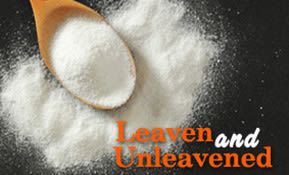

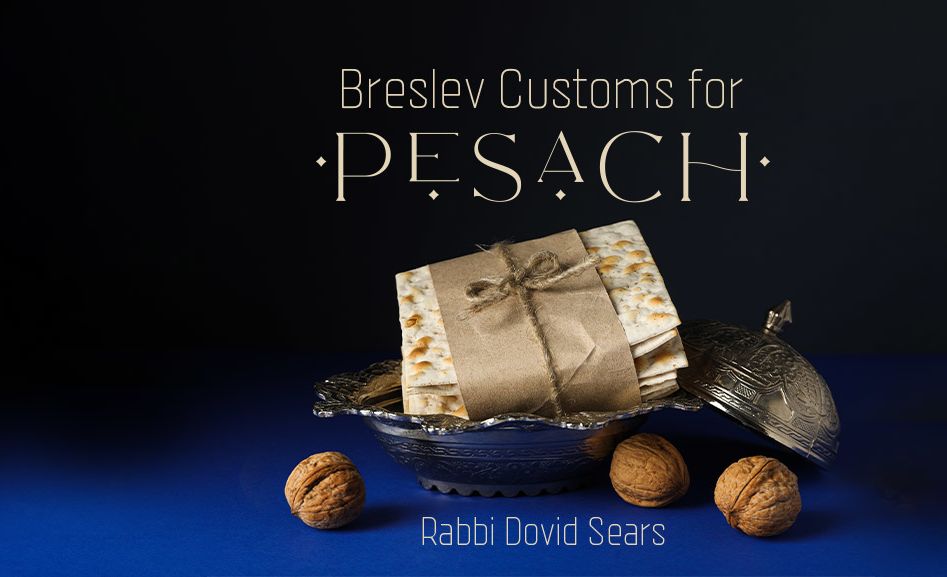
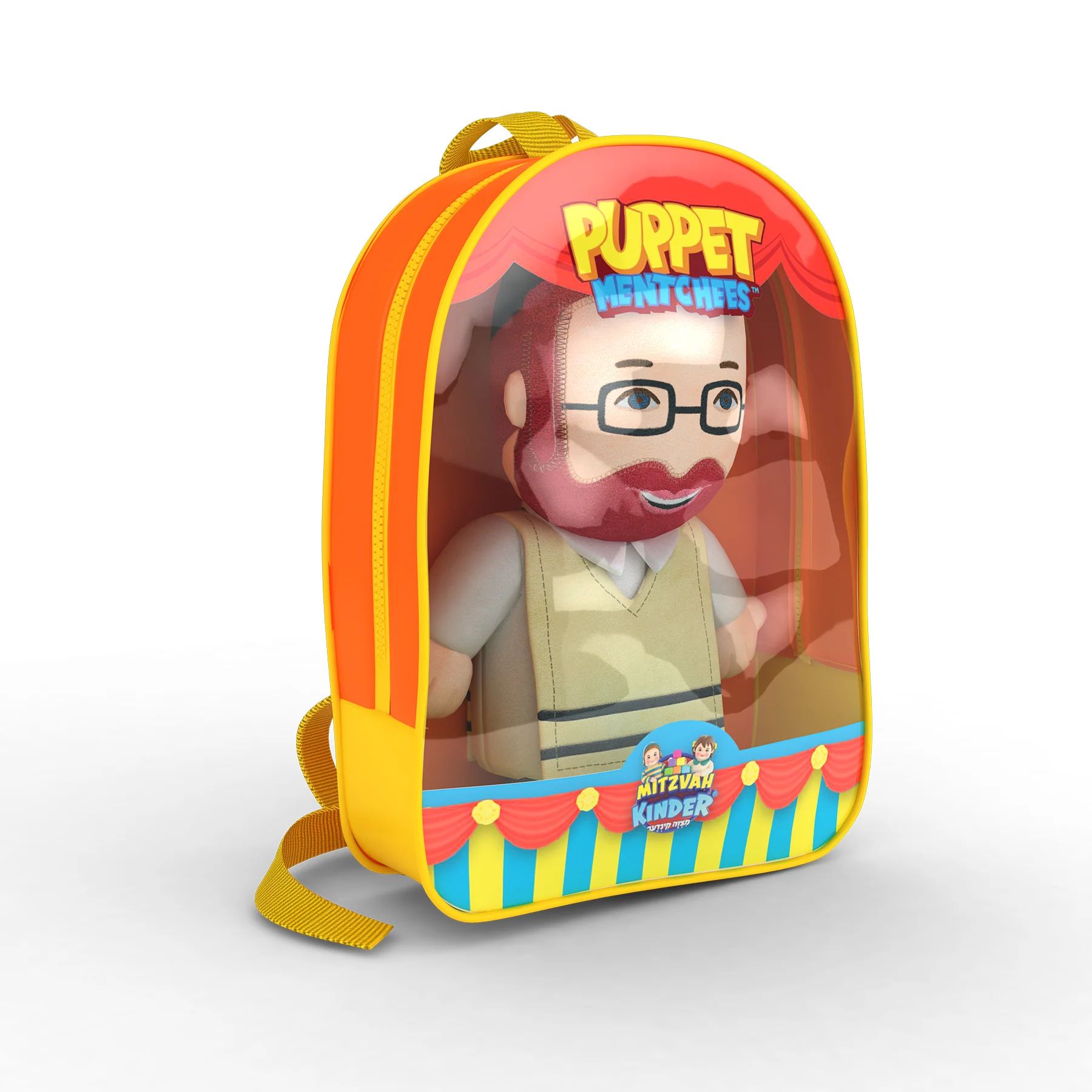

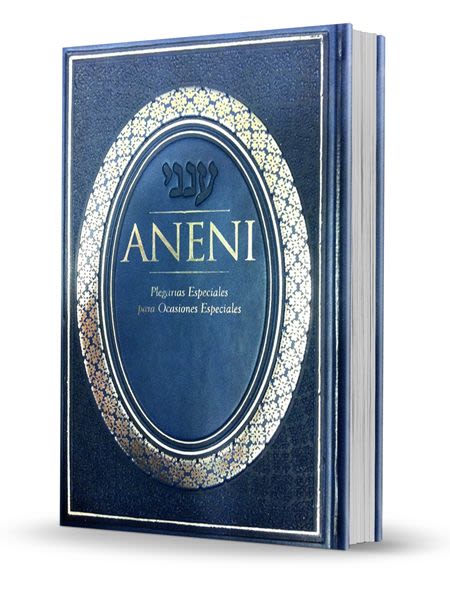
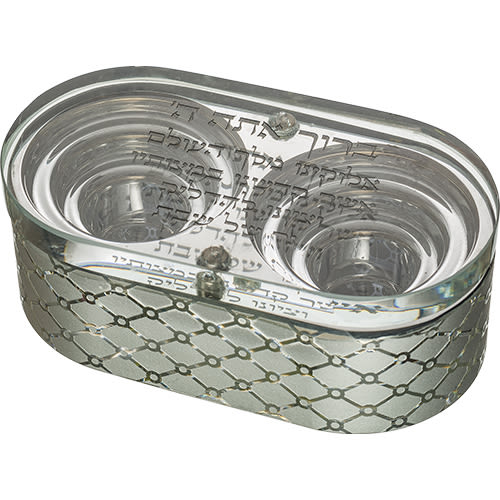

Tell us what you think!
Thank you for your comment!
It will be published after approval by the Editor.